Online platforms help safeguard ancient relics of the Mogao Caves and give tourists and researchers better access to learn about and study their magnificent history, report Xu Lin and Ma Jingna in Dunhuang, Gansu.
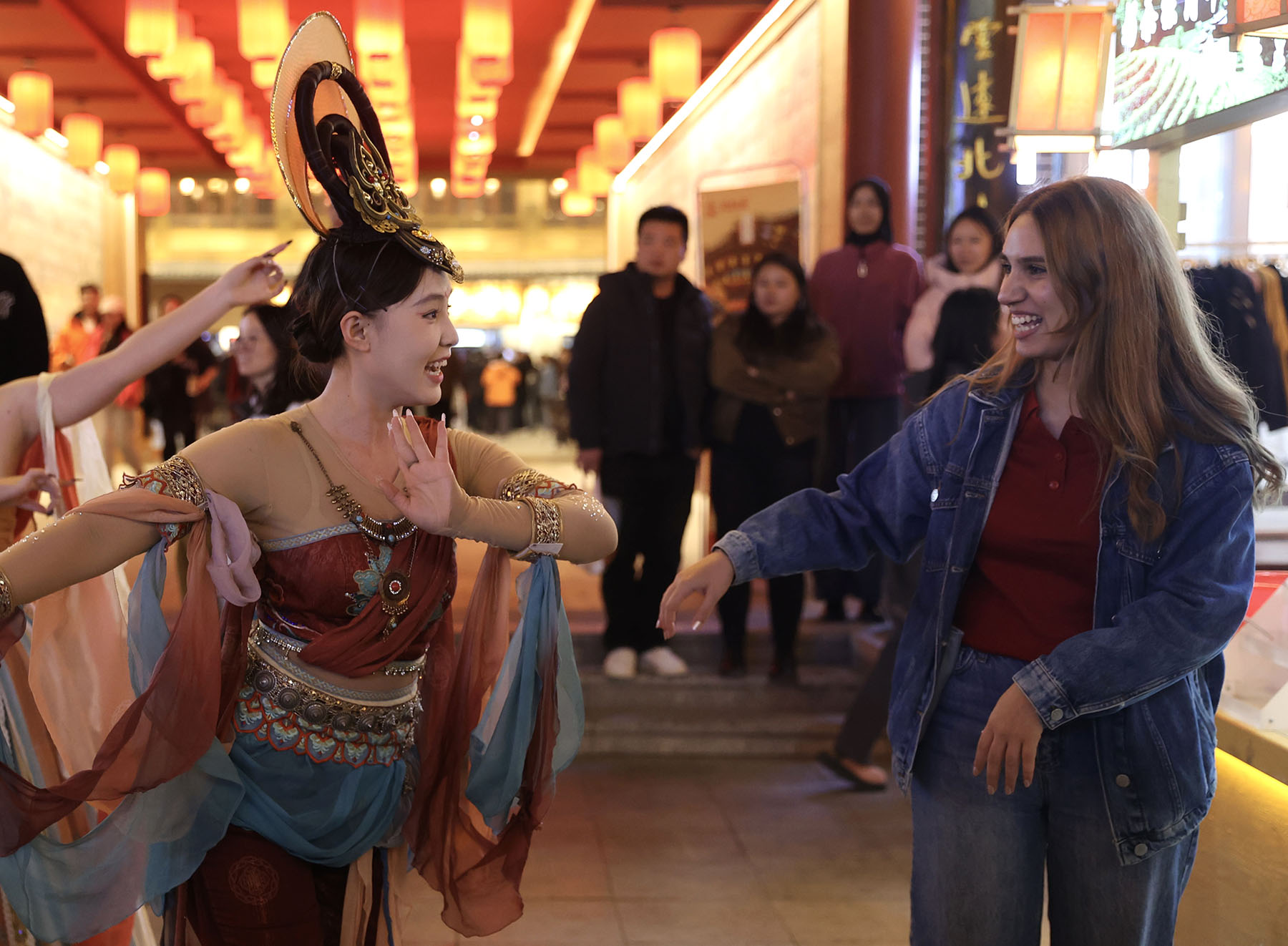
Nestled at a strategic crossroads of the ancient Silk Road, Dunhuang in Gansu province is far more than a desert oasis; it is a timeless testament to cross-cultural exchange.
This legacy is most vividly preserved within the Mogao Caves, where vibrant sculptures and murals chronicle Buddhism's journey from India to China, showcasing its integration with Chinese culture.
Meanwhile, guarding the western frontier were the Yumen and Yangguan passes through which merchants, travelers and diplomats entered and exited China.
Today, Dunhuang preserves this rich legacy, blending historical charm with ecological protection, tourism development, and digital technologies to share its stories with the world.
READ MORE: The sands of time hold the future
"We conduct real-time monitoring of cultural heritage and its surrounding area with advanced technology and implement ecological restoration projects to achieve the harmonious coexistence of cultural heritage and the environment," said Dunhuang Mayor Zhu Jianjun in a speech at the 2025 "Global Mayors Dialogue ・ Dunhuang", held in the city from Saturday to Monday.
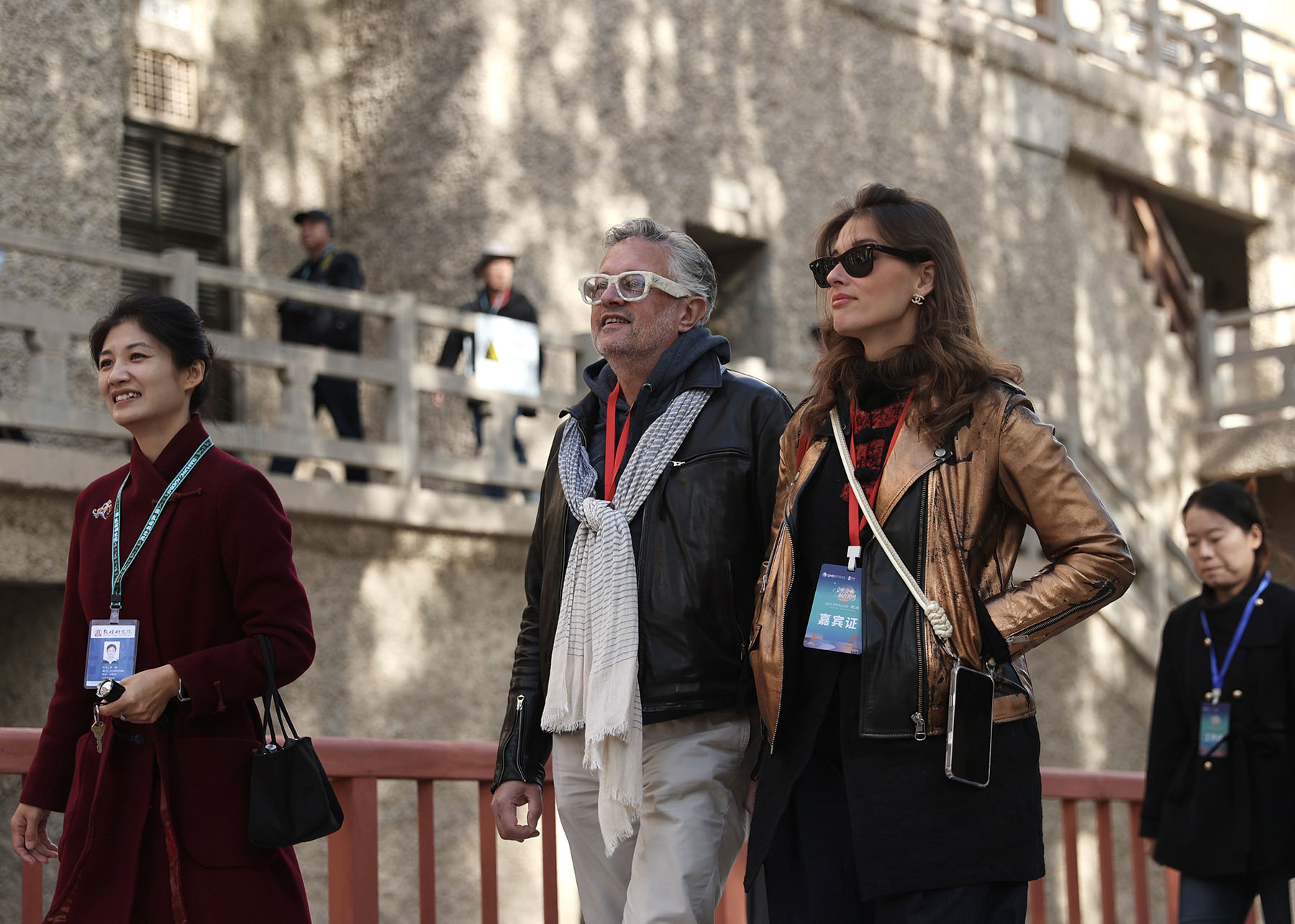
The event aims to implement the Global Civilization Initiative and build a more effective international communication system. It attracts about 200 participants, including government officials, scholars, representatives of cultural institutions, and companies from China and nine other countries.
During the event, participants discuss the opportunities and challenges of governing cultural cities, such as how to balance cultural heritage preservation and modern development.
"The greatest challenges facing cities in the 21st century are environmental sustainability … As we work to build the municipalities of the future, we focus on development that does not deplete our natural resources," says Burak Deste, general secretary of the Manisa Metropolitan Municipality, Turkiye.
He stresses that both Dunhuang and Manisa share a commitment to protecting cultural heritage.
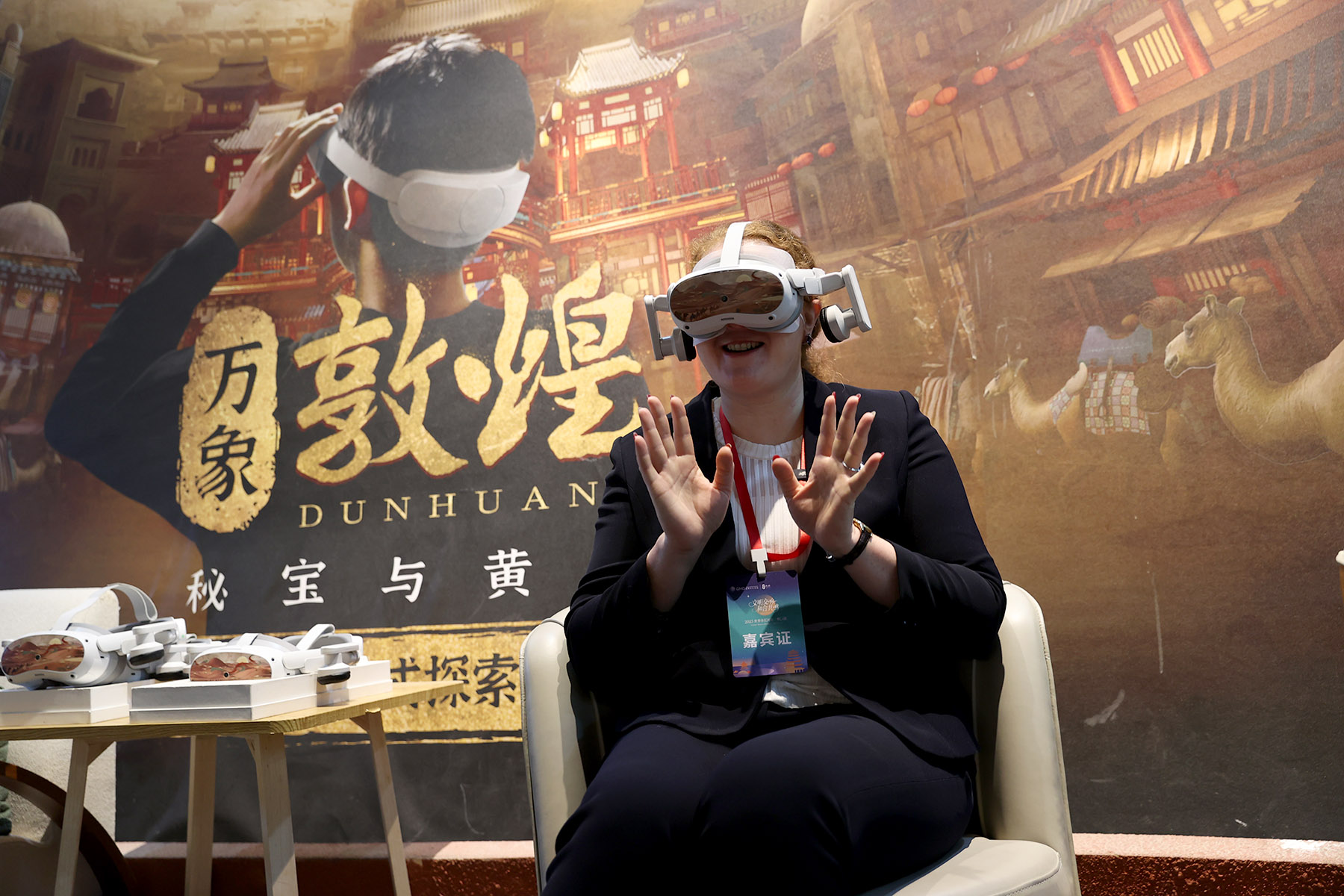
After learning how Dunhuang uses a comprehensive sand control system to protect the Mogao Caves, he was impressed by the city's balance of tourism development and the protection of its ecological environment.
"Venice and Dunhuang are closely linked by their historical beauty, artistic heritage and excellent craftsmanship," says Elisa Andreoli, public relations and social media manager of Wavents, a cultural company in Venice, Italy.
"The two cities are striving to bring a prosperous future for new generations through a path of ecological transition, environmental protection, and recovery."
She believes that heritage must be safeguarded and incorporated into the policies of regional development and city marketing.
"Dunhuang's preservation efforts extend far beyond the sculptures and murals within the caves. It also places great emphasis on optimizing the historical environmental landscape — an element inherently interdependent with its heritage sites," says Su Bomin, director of Dunhuang Academy.
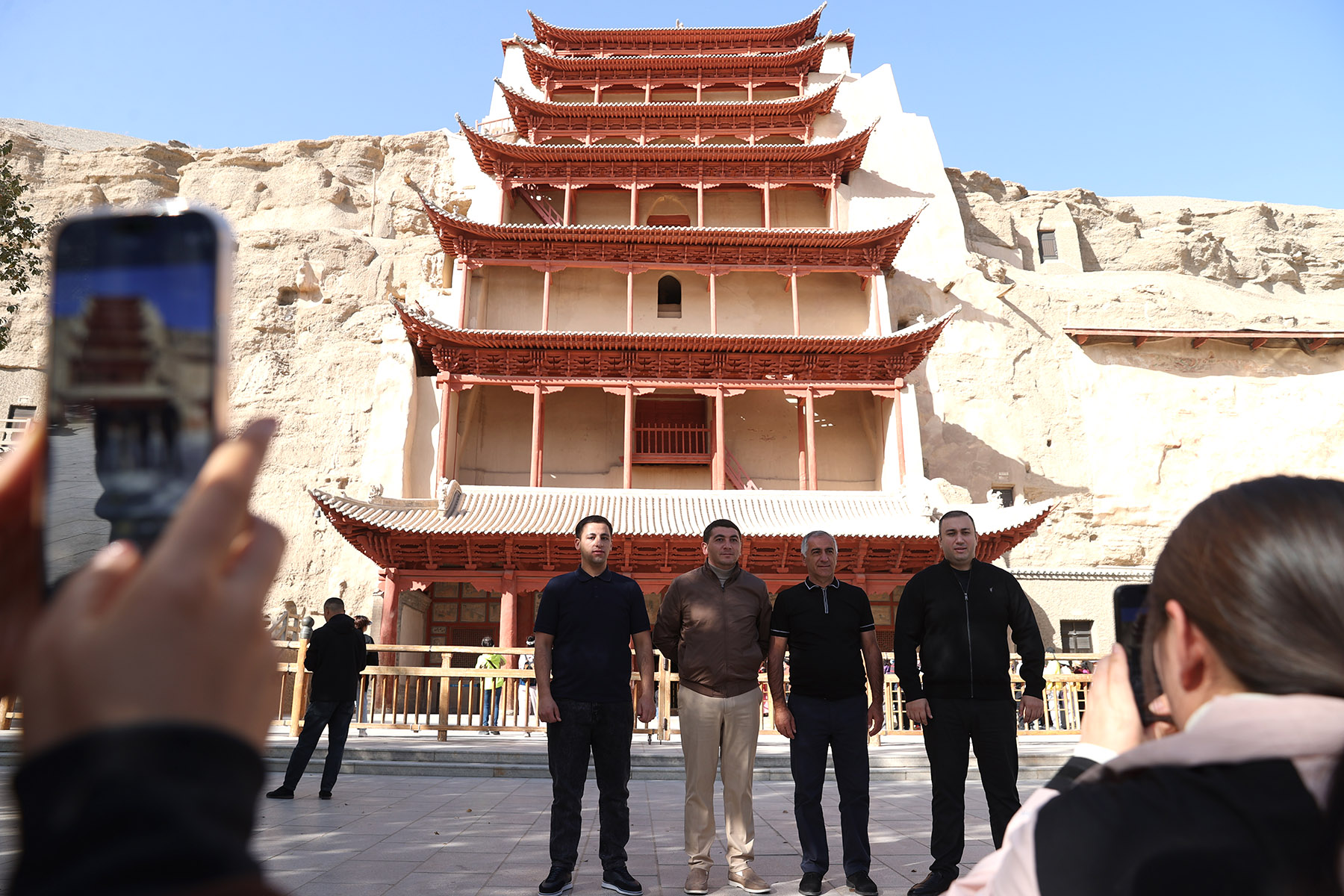
The Mogao Caves receive domestic and international tourists annually. They watch two short films to understand the site's historical background and enjoy views of several classic caves via digital technology. This approach reduces their on-site stay time and eases pressure on the caves.
"To meet their needs, we've also constructed service infrastructure in accordance with relevant regulations. The process has undergone expert reviews and environmental impact assessments," Su says.
Thanks to the Digital Dunhuang project launched in 2016, netizens around the world can view the exquisite sculptures and murals in 30 Mogao caves online.
Additionally, the Digital Library Cave platform developed by Dunhuang Academy allows people, particularly Dunhuang studies scholars, such as Olga Pronkina, to browse digital copies of an extensive collection of documents, religious scriptures and images, including those dispersed overseas.
"I had to visit different libraries to read books and to study about Dunhuang. The digitalization enables me to access these precious materials from my study whenever I want," says Pronkina, a Russian professor at the Gansu University of Political Science and Law.
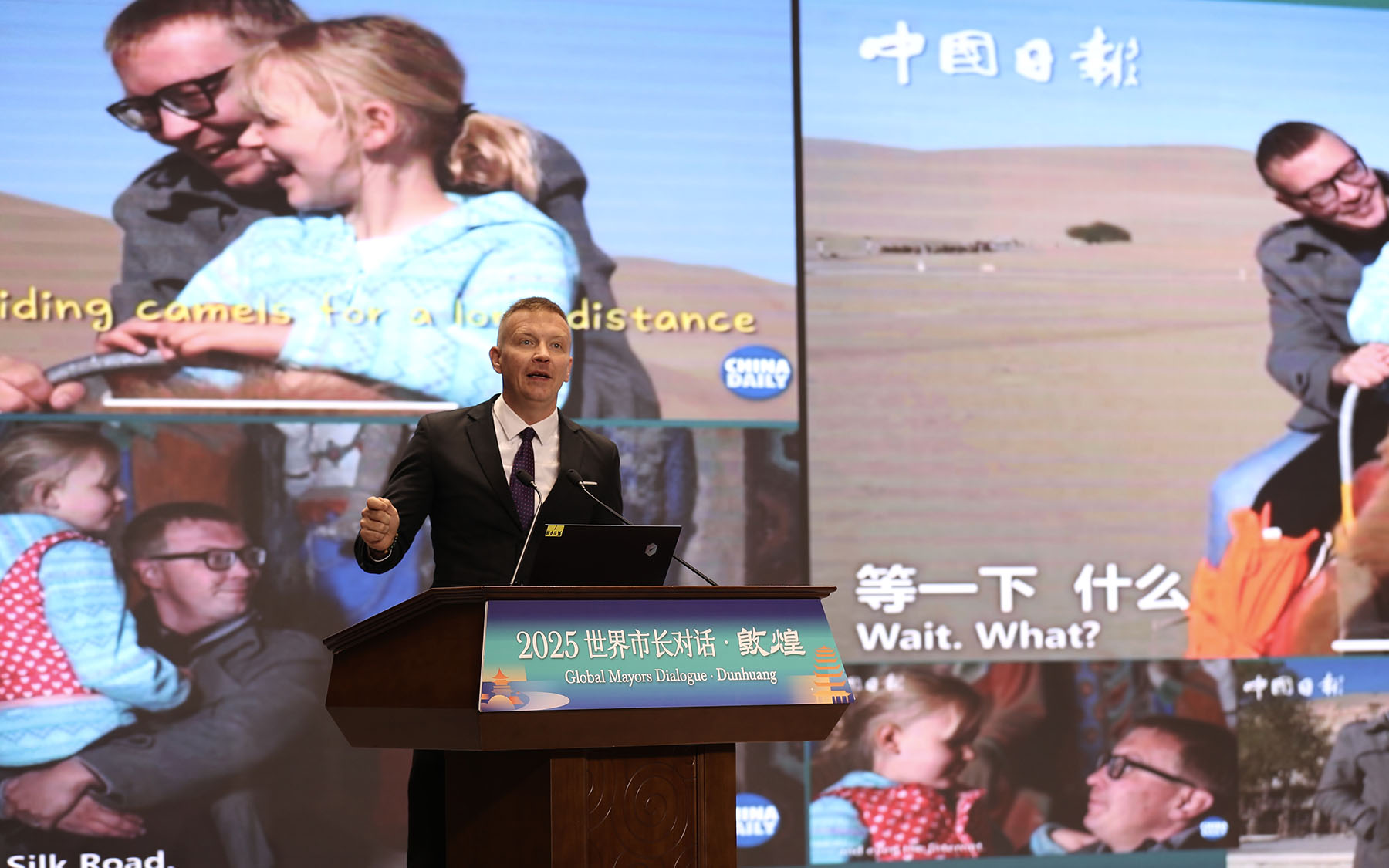
In Cave 158, a Tang Dynasty (618-907) mural vividly showcases rulers of the western regions of ancient China and Central Asia in various facial expressions and costumes.
"The mural shows that cross-cultural, people-to-people exchanges took place in Dunhuang for centuries. It's not merely a relic of the past but a living tradition we can still witness today. Therefore, fostering such interaction is more indispensable than ever."
She says that it's essential to expand the scope of Dunhuang studies. "I'm conducting research in the archaeology of Central Asian countries. The study reveals commonalities between the cultural artifacts of these countries and Dunhuang's murals, such as their themes."
The Library of the Hungarian Academy of Sciences is one of the seven international partners of the Digital Library Cave platform, sharing digital copies of its Dunhuang collections.
"Both countries have already achieved fruitful collaboration in this field. We also plan to work together to curate a large-scale exhibition in Hungary focused on the ancient Silk Road," says Steven Back, representative of the Hungarian National Museum in China.
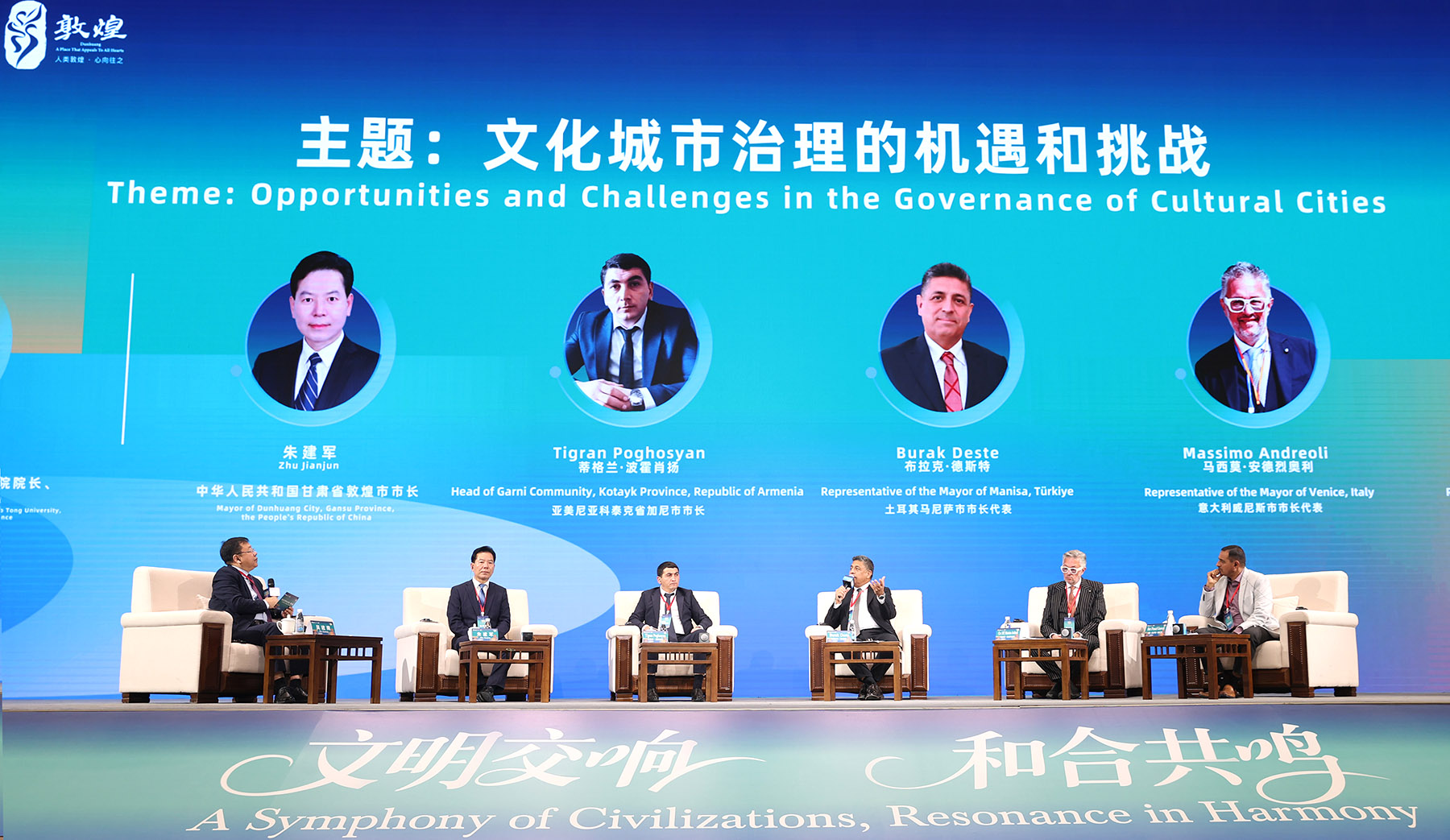
He notes that many Hungarian scholars visited Dunhuang in the past, and hopes to share their stories through this exhibition to boost cultural exchanges across Eurasia.
"Dunhuang offers visitors insights into the long-standing interactions between the East and the West, which have shaped each other's thoughts and philosophies. Today, the city continues to boost international exchanges with its cultural heritage," he says.
ALSO READ: Journey through time, stars and flavors
Back emphasizes the importance of curating more immersive exhibitions to showcase the rich culture of Dunhuang to the world, along with the philosophical, artistic, and historical connotations behind it.
Sun Meng contributed to this story.
Contact the writers at xulin@chinadaily.com.cn


